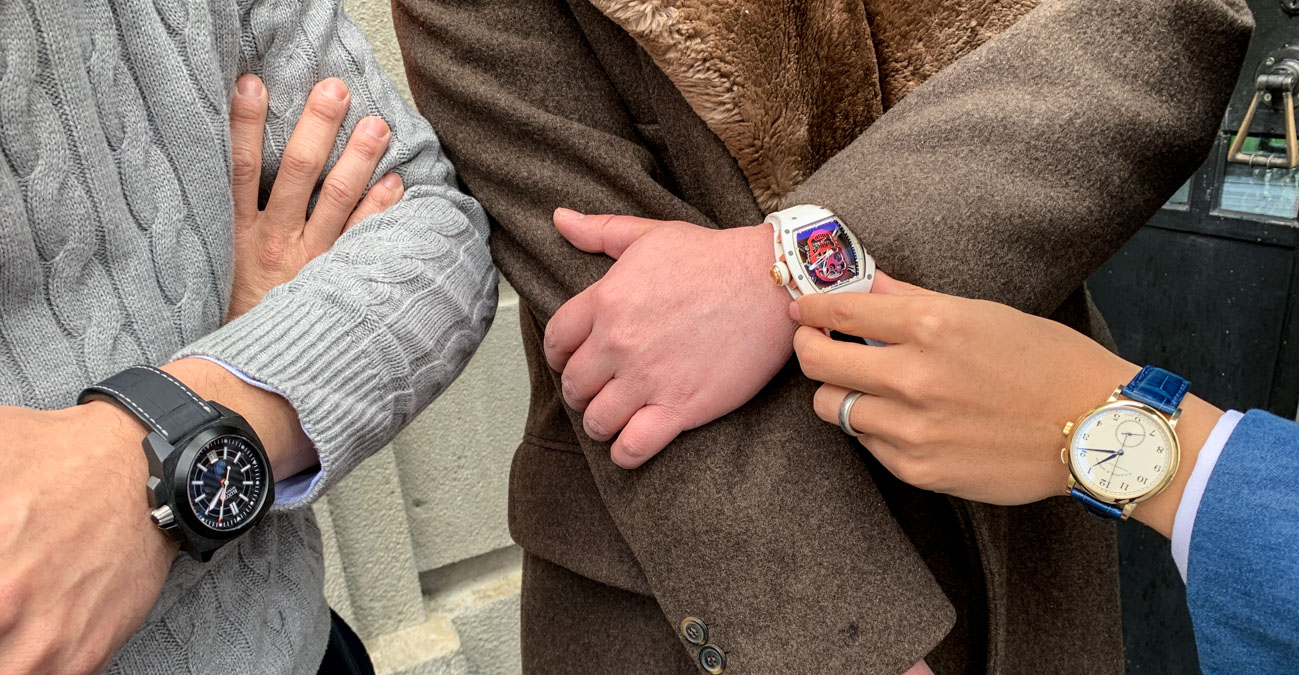
It has been nearly 20 years that I have considered myself a watch collector. Before that, I was just a kid who never left the house without a timepiece
. Toward the beginning of the 21st century, I stumbled upon an attractive relic from the 20th century — the fine mechanical wristwatch. Since the moment I discovered the fascination of wearable timepieces, my interest in collecting them began. In fewer than seven years after becoming a watch collector, I began to engage with the greater collector community. I now ask myself the question (from the vantage point of a seasoned enthusiast): Is watch collecting still fun today? What would my experience be like — as a consumer and a watch geek — if I were only now starting to get into watches in 2019?
One of the most notable differences between watch collecting back in the late 1990s/early 2000s and now is the demographic of the people who participated in anything related to timepieces online. Watch information available on the Internet at the time was much “cleaner,” albeit more limited in both scope and variety. Users mostly constituted watch sales professionals, experienced collectors, and the watchmakers themselves. Some of those in the collector category participated as forum moderators or other types of community leaders, such as bloggers. I was not the first watch blogger, but I was probably among the first four or five; a good number of us still produce watch content today. (The same cannot be said about many who came after us.)

Those in professional watch media roles (mainly folks with writing and journalism degrees) wrote for an audience of the watch trade and specialized consumers, including watch collectors. Outside of club-like Internet forums and some high-brow newspapers, little qualitative information was offered to the mainstream consumer about watches. Consumers’ biggest interface with watches was at retail stores and via print advertising. This was often an effective way of whetting a consumer’s appetite. And for those interested in doing research about high-ticket purchases, the Internet offered a healthy volume of quality advice that any sensible mainstream consumer could follow. What didn’t exist was a marketing machine designed to push luxury watches to consumers, unless they were expressly looking for that information.
Aside from a few too many spam e-mails inviting you to buy “authentic replica watches,” being a watch collector back then was provocative experience, and the goal was to learn about as many watches as possible, carefully considering those watches that, when worn, met your own particular sense of taste and comfort. It was widely known that some watches could be resold — and that doing so was a privilege rather than an automatic expectation.
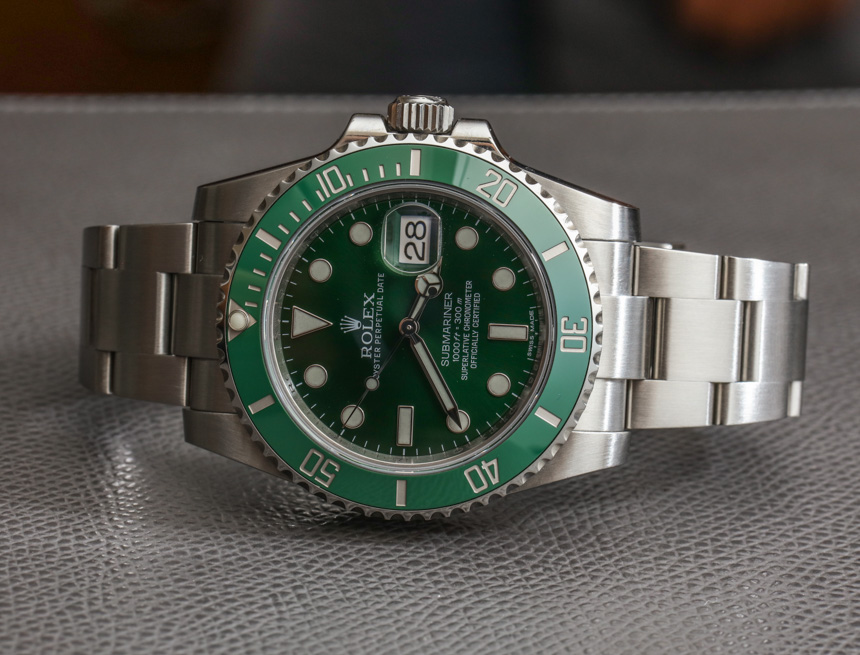
When I speak to emerging watch collectors today, I’m often disappointed in how laser-focused on resale value some of them tend to be. I always wondered, “Why are people making such fuss about losing money on a purchase they are supposed to be able to afford in the first place?” Watches should be bought with disposable income. If you need to consider resale value for a watch, you probably can’t really afford the product in the first place.
While it disappoints me that watch consumers place too much emphasis on a watch’s retail value, they do have a point. The watch industry has firmly trained the majority of repeat watch collectors that retail prices cannot be trusted. At the same time, the burgeoning independent watch community (which comes in many forms) has frequently barked the slogan that big-box luxury brands pad margins and that “luxury” can be afforded for less. Whether or not this is true, the traditional luxury watch players have never had anything close to a formal rebuttal to the refrain that they’re being dishonest with their customers. And at the same time, retail prices for once basic and conservative steel sport watches are routinely exceeding retail price on the gray market. Now, more than ever, we should be cognizant of pricing practices.
Understanding why one particular watch costs X and why a seemingly similar watch costs Y is a complex analysis. The bottom line is that price doesn’t always equal inherent quality, and in order to spend smartly, collectors need to get wise.

In that respect, watch collecting today is similar to watch collecting two decades ago. Watch enthusiasts have always needed to perform a careful measure of each timepiece they’re interested in and ask themselves the question, “Does it feel worth the price?” The difference is that, in 2019, there is a legion of would-be manipulators battling for your attention. Social media and low-quality published content can just as easily defraud and manipulate as it can to educate and inform. A growing number of consumers today have simply adopted an attitude of, “I can’t trust anything I see online.”
Blatant attempts to win consumer dollars are nothing new in the luxury watch industry. For hundreds of years, selling a wristwatch has been as much about selling a dream as it is about outfitting a user with a useful instrument. The myths we create about what we can perform while wearing these possibility-rich tools is what creates the desire to wear and acquire these little wind-up toys. My point is that, as consumers, we still need to take the time to unpack those myths, one by one, as we research and select new watches. This process, no matter how ridiculous, cannot be fast-tracked.
The implication of this point, from a marketing perspective, is profound. The idea is that for people to make emotionally strong watch purchases (meaning they really want it and will wear it), they need to first develop a relationship with the watch. Once the relationship is formed (and provided the consumer can afford it), a purchase tends to occur. That said, it can take years for a consumer to develop a relationship with a watch. In the world of marketing-speak, consumers need multiple touchpoints with a watch in order for that relationship to develop. Touchpoints are experiences with a watch that might include seeing an advertisement, seeing one on a person’s wrist or in a store, or reading an editorial article.
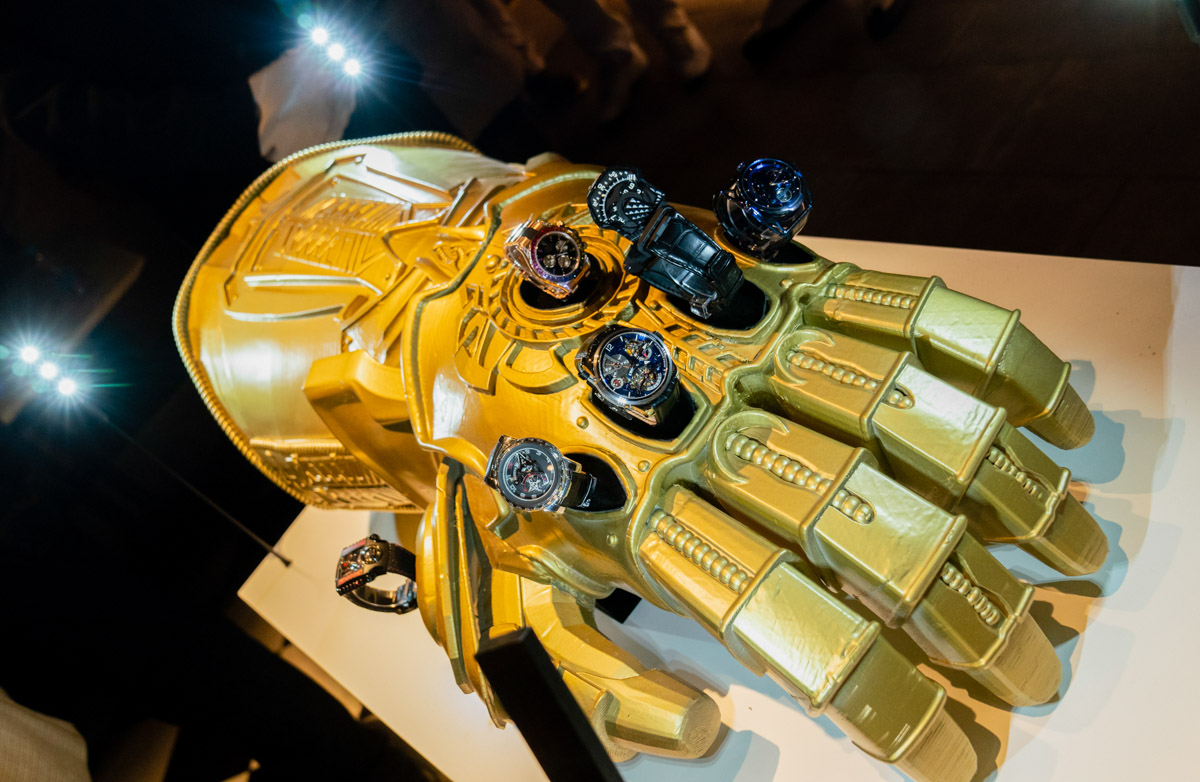
Watch consumers have limited budgets but also limited capacities to develop relationships with watches. Because the industry didn’t understand or consider this, it has been flooding the market with more and more luxury watches since around the year 2000. Consumers could not be developed fast enough to keep up with production. In some ways, it has become un-fun to be a watch collector in recent years because the sheer number of interesting watches made available to purchase far exceeds the resources of most collectors. No high-end hobby, not even horses or yachting, can survive if brands are selling exclusively to the ultra-high-end. Given the state of the global economy and slumping middle-class buying power, why was the watch industry suddenly expecting 1% earners to spend in volumes like a middle-class population? It is never going to happen.
Many fellow watch collectors I know are familiar with the fatigue of learning about at least one new “buyable” watch per week. Interestingly enough, the fatigue isn’t related to the volume of new watches but rather the deficiency of watches with really strong value propositions. Many of the new watches are those consumers need to consider over time — and save up for. How would you feel if, while you were saving up for watch A, watch B was released, compelling you to choose between one or the other? Consumers are so afraid that they will be asked to spend “once in a while” money on a watch that could be outdone by a potentially more interesting option the very next week. It isn’t fun when watch collectors find themselves experiencing choice paralysis when their goal is simply to buy a new watch to enjoy.
Even though there are more offers than ever to buy watches online, consumers are rarely incentivized to spend when it comes to adding a new watch to their collection. The appearance of infinite choice (aside from select models, of course) appears to be the status quo with luxury watches. So, the act of buying a watch today can actually be an inferior and more stressful than in years past.
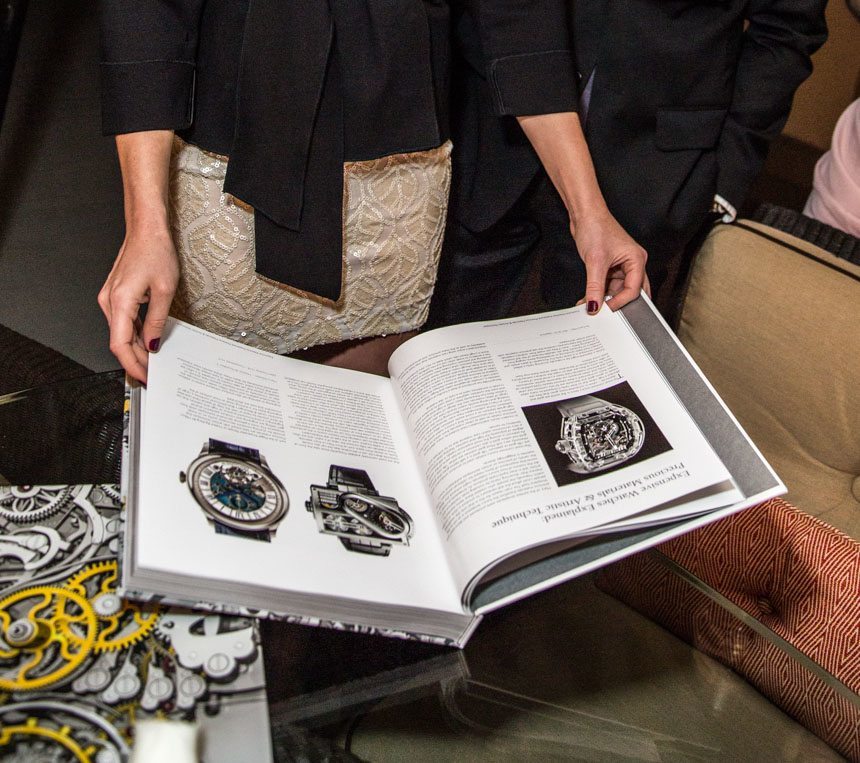
I can’t imagine what it is like for brand new watch collectors who are experiencing watch sales, media, and social community culture online. Finding expert voices can be a challenge because everyone is starting to call themselves an “expert.” (I didn’t refer to myself an “expert” until other people identified me as such.) While there are some great ways to buy watches online or at brick-and-mortars these days, I really don’t think that actually purchasing a watch is among the more enjoyable parts of this hobby in 2019.
On the plus side, there has never been a more democratic time to become a watch collector. If you can eschew the big-name luxury watch brands, the microcosm of enthusiast-driven “microbrands” (a term I dislike) offers an incredible assortment of entry-level-priced collectible watches that are often marketed directly to consumers (not through stores). It is a great time to start getting into watches if only because of the many incredible products you can begin with for under a few hundred dollars. It isn’t that such watches didn’t exist 20 years ago, but it was almost an accident if they ended up being collectible — because they weren’t designed with collectors in mind.
Despite much online content being untrustworthy, the Internet offers a rich community of media personalities and fellow collectors to learn from. Instagram and YouTube has rapidly sped up the pace with which consumers can get opinions and recommendations. Many of those opinions and recommendations are designed entirely to make money, and some are well-meaning but merely ignorant. Trusting the words of a stranger online about watches or any other allotment of money is silly. Is it ironic for me to say that? No, because I don’t ask anyone to trust my words, I ask them to be patient and learn what I learn so that they can return to me at a later date and confirm that they came to the same conclusion I did. I’m merely guilty of being convinced I am correct, never of giving my readers commands.

It has taken me much of my career as a collector to learn good taste when it comes to watches. Of course, I have my experimental tastes (everyone does), but at the end of the day, I can easily identify which watches are worth attention. I’ve never tried to rush it because I wanted my conclusions to be authentic. Today, I see would-be collectors coming in and trying to rush the experience of developing good taste. Their aim is to let someone do the selection for them and just buy a watch that will impress others. Hey, posers can learn, too, you know. Perhaps, in the future, I will dedicate an entire op-ed to how the luxury industry loves marketing to the insecure rich (their favorite prey!).
No discussion about the pleasure of collecting watches today would be complete without mentioning our faux friends, the watch scalpers and speculators. These folks aren’t buying watches to wear and enjoy; when they do wear their “stock,” they merely don a particularly expensive watch and appear to care for little else but how much money appears to be on their wrist. In a global investment market deficient in enough traditional financial instruments to put money in, speculators (along with those who sell to them) have co-opted the luxury men’s watch into a tradeable treasure. In addition to (literally) making one man’s trash another man’s treasure, watch scalpers and speculators are like an invading species competing with endemic watch collectors for timepieces.
Sure, some watch speculators become watch collectors, and vice versa — so there is a passion for the art injected from both sides. More so, you will never entirely ward off the stench of rarity-creation and price inflation when it comes to peddling luxury goods to consumers with obvious extra cash to spend. It is a regretful side effect of the effort inherently required to make a good watch that so many of them must be astronomically priced. In many instances, it simply becomes a matter of, “How much should each of these 50 pieces be priced at if we just spent $10,000,000 on developing and producing them?” As weird as it might sound, this is a question watch brand managers have to answer on a daily basis. In any event, the fact remains that, unlike 20 years ago, the watch collector today must compete with the larger dollar of investors who masquerade as enthusiasts when their primary area of enthusiasm is to profit off other watch collectors. Personally, I don’t find their addition to this process as particularly fun.
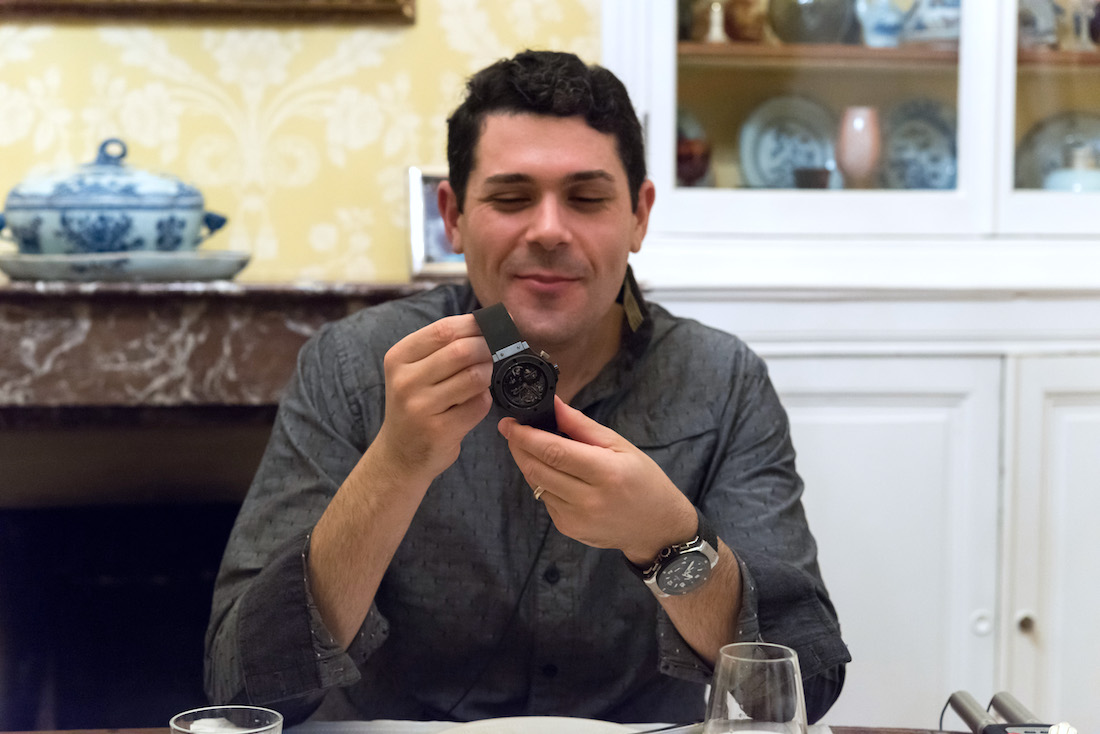
One of the most fun things about being a watch collector today is the rich community you’ll connect with, both online and in person. I’ve met some of my best friends at in-person events aBlogtoWatch has hosted or other wristwatch industry soirees. There has never been more opportunity to interface with authentic watch collectors and ask questions, share experiences, or just plain geek out on the watches everyone is wearing. Real friends will give honest opinions, and the bonds formed with like-minded individuals is both healthy and fun.
I worry about how long it will take for the watch industry to recover from everything it’s going through right now. As frustrated as I get with the industry, I still find myself loving watches and getting excited about a lot of new products. I’m gonna tough it out for the time being. What about you? What do you want to talk about next?
